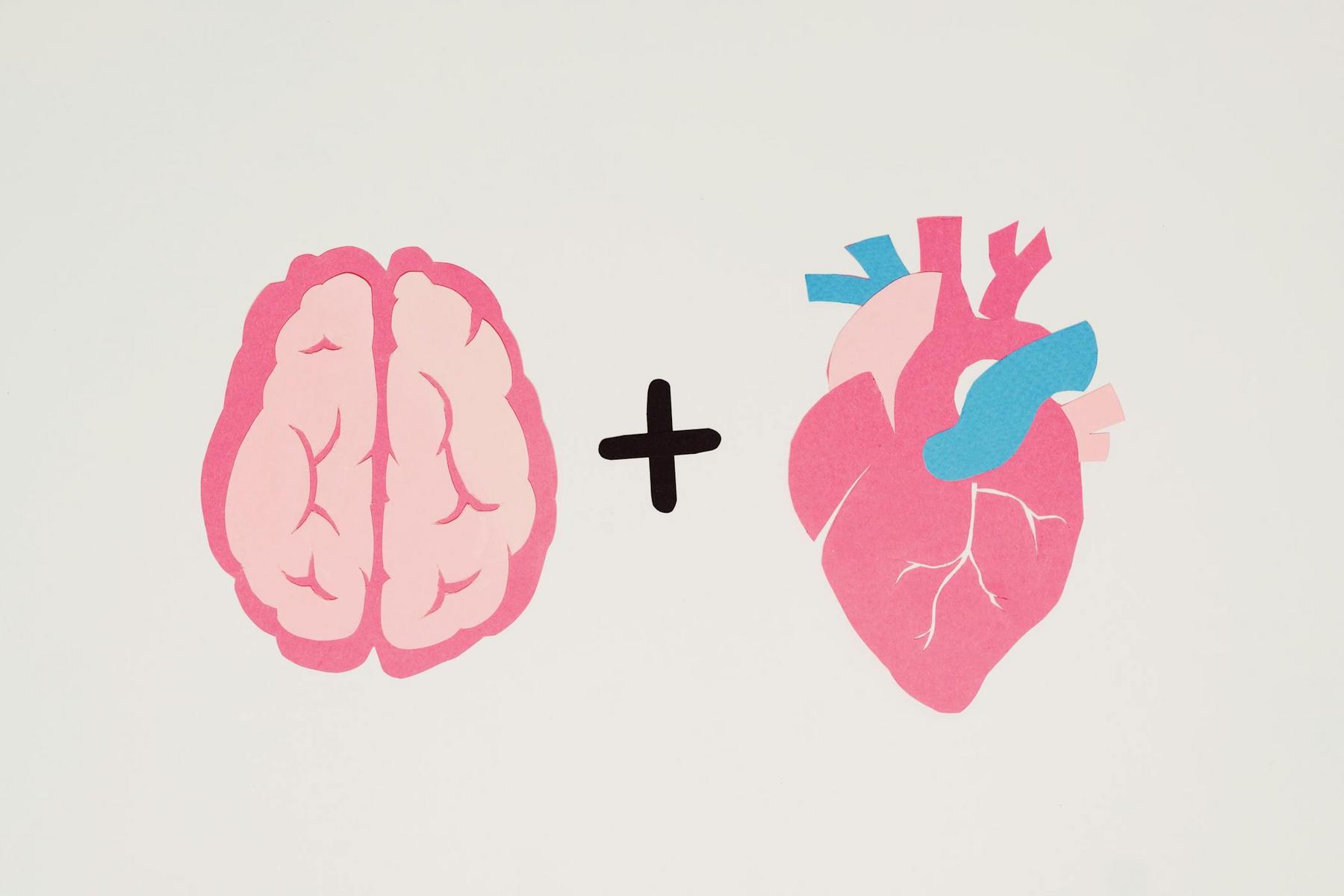In an era where chronic stress affects millions of Australians and lifestyle-related health conditions continue to rise, the search for accessible, evidence-based interventions has never been more critical. While complex medical treatments dominate healthcare discussions, one of the most powerful therapeutic tools remains literally under our noses—our breath. The scientific understanding of deep breathing has evolved from simple relaxation techniques to sophisticated physiological interventions capable of producing measurable changes across virtually every major body system.
Recent Australian health statistics reveal alarming trends in cardiovascular disease, mental health disorders, and stress-related conditions that conventional approaches struggle to address comprehensively. However, emerging research demonstrates that controlled breathing practices can produce clinically significant blood pressure reductions, enhance cognitive performance, and optimise hormonal balance through mechanisms that extend far beyond basic oxygen exchange.
The physiological effects of deep breathing represent a fascinating intersection of respiratory mechanics, cardiovascular regulation, neurological adaptation, and cellular optimisation that creates profound health benefits through entirely natural processes. Understanding these mechanisms provides insight into why breathing exercises have become increasingly recognised as essential components of comprehensive healthcare approaches worldwide.
How Does Deep Breathing Transform Your Cardiovascular System?
The cardiovascular system demonstrates remarkable responsiveness to controlled breathing patterns, with deep breathing exercises producing clinically significant changes in blood pressure, heart rate variability, and overall cardiac function. Research consistently shows that controlled breathing interventions can reduce systolic blood pressure by 3-6 mmHg, a reduction that is sufficient to meaningfully impact cardiovascular disease risk.
Blood Pressure Regulation Through Respiratory Control
The mechanisms underlying breathing-induced blood pressure changes involve complex interactions between respiratory mechanics and cardiovascular regulation. During diaphragmatic breathing, the downward movement of the diaphragm creates negative intrathoracic pressure that acts like a vacuum, pulling blood into the thorax and increasing venous return to the heart. This mechanical effect triggers arterial stretch receptor activation, which subsequently increases parasympathetic nervous system activity while decreasing sympathetic outflow.
The baroreceptor response represents a critical component of breathing’s cardiovascular effects. Baroreceptors located in the carotid arteries and aortic arch detect pressure changes and reflexively adjust heart rate and vascular tone to maintain cardiovascular homeostasis. Controlled breathing at rates of 6-10 breaths per minute optimises baroreceptor function by creating rhythmic pressure variations that enhance sensitivity and improve overall cardiovascular regulation.
Heart Rate Variability Enhancement
Heart rate variability (HRV) serves as one of the most sensitive indicators of breathing exercise effectiveness, with controlled breathing consistently increasing HRV parameters across diverse populations. HRV measures the fluctuations in time between heartbeats and reflects the dynamic balance between sympathetic and parasympathetic nervous system influences on cardiac function.
Breathing exercises enhance HRV primarily through vagus nerve stimulation during prolonged exhalation phases. The vagus nerve carries parasympathetic signals that slow heart rate during exhalation, creating the foundation for increased variability when breathing patterns are controlled and extended. Research demonstrates that breathing at approximately 6 breaths per minute (0.1 Hz) maximises HRV by synchronising respiratory and cardiovascular oscillations at their natural resonance frequency.
| Breathing Pattern | Heart Rate Effect | Blood Pressure Impact | HRV Response |
|---|---|---|---|
| Normal Breathing (12-20 breaths/min) | Minimal variation | Baseline levels | Low variability |
| Slow Breathing (6 breaths/min) | Enhanced variability | 3-6 mmHg reduction | Significantly increased |
| Deep Diaphragmatic | Improved rhythm stability | Reduced peripheral resistance | Optimised balance |
| Coherent Breathing (5 breaths/min) | Maximum coherence | Enhanced regulation | Peak variability |
The clinical significance of improved HRV extends beyond cardiovascular health to encompass stress resilience, immune function, and overall physiological adaptability. Higher HRV values indicate better cardiovascular health and improved capacity to respond to physiological challenges, making HRV enhancement through breathing exercises particularly valuable for health optimisation.
What Happens to Your Nervous System During Controlled Breathing?
The autonomic nervous system serves as the primary mediator of deep breathing’s physiological effects, with controlled breathing practices producing profound changes in both sympathetic and parasympathetic nervous system activity. These autonomic modifications create cascading effects throughout the body that influence stress responses, inflammatory processes, and overall physiological regulation.
Parasympathetic Activation and Vagal Stimulation
Controlled breathing exercises preferentially activate the parasympathetic nervous system through direct vagus nerve stimulation, creating what researchers term respiratory vagus nerve stimulation (rVNS). This activation occurs primarily during extended exhalation phases, as the exhale represents the period of maximal vagal influence on cardiac and physiological function.
The vagus nerve extends from the brainstem to various organs throughout the body, including the heart, lungs, digestive system, and immune organs. When stimulated through controlled breathing, the vagus nerve triggers widespread parasympathetic responses including reduced heart rate, decreased blood pressure, enhanced digestive function, and improved immune regulation.
Longer exhalations are particularly effective for parasympathetic activation because they extend the period during which vagal influences predominate over sympathetic activity. Research demonstrates that breathing patterns with low inhale-to-exhale ratios (such as 1:2 breathing) produce measurable increases in parasympathetic activity markers, including enhanced high-frequency heart rate variability power.
Sympathetic Nervous System Regulation
While parasympathetic activation receives primary attention, the concurrent regulation of sympathetic nervous system activity represents an equally important component of breathing’s physiological effects. Chronic sympathetic activation contributes to numerous health problems including hypertension, cardiovascular disease, immune dysfunction, and inflammatory disorders.
Deep breathing exercises provide direct methods for downregulating sympathetic activity, leading to decreased stress hormone release and reduced inflammatory responses. The sympathetic regulation occurs through multiple pathways, including direct neural inhibition, hormonal modulation, and baroreceptor-mediated reflexes that collectively reduce sympathetic outflow.
Studies examining breathing exercise effects on inflammatory markers demonstrate significant reductions in pro-inflammatory cytokines including tumor necrosis factor-alpha and interleukin-6, along with increases in anti-inflammatory mediators like interleukin-10. These changes indicate that breathing exercises can directly modulate immune system function through sympathetic nervous system regulation.
Autonomic Balance and Homeostatic Optimisation
The concept of autonomic balance refers to the optimal relationship between sympathetic and parasympathetic activities, with healthy individuals demonstrating appropriate activation of each system based on situational demands. Deep breathing exercises serve as tools for restoring and maintaining optimal autonomic balance, particularly beneficial for individuals experiencing chronic stress or autonomic dysfunction.
Regular breathing practice produces sustained improvements in autonomic balance markers, including enhanced heart rate variability, improved baroreceptor sensitivity, and better stress recovery patterns. Four-week breathing training programs demonstrate significant improvements in autonomic function parameters that persist beyond immediate practice sessions, suggesting lasting adaptations in autonomic regulation.
Why Do Breathing Techniques Enhance Brain Function and Cognition?
The neurological effects of deep breathing encompass improvements in cognitive performance, enhanced neuroplasticity, and optimised brain function through multiple pathways including cerebral oxygenation, stress reduction, and direct neural activation. These neurological adaptations represent some of the most fascinating aspects of controlled breathing research and provide mechanisms for cognitive enhancement and neuroprotection.
Cerebral Oxygenation and Neural Efficiency
Brain tissue requires constant oxygen supply to maintain optimal function, consuming approximately 20% of total body oxygen despite representing only 2% of body weight. Deep breathing exercises enhance cerebral oxygenation through improved pulmonary gas exchange, enhanced cerebral circulation, and optimised oxygen-carrying capacity.
The relationship between breathing patterns and brain oxygenation extends beyond simple oxygen delivery to include complex interactions with carbon dioxide levels and cerebral blood flow regulation. Carbon dioxide serves as a potent cerebral vasodilator, with arterial carbon dioxide levels directly influencing brain perfusion. Controlled breathing exercises that optimise carbon dioxide levels can enhance cerebral circulation and improve oxygen delivery to brain tissue.
Excessive oxygenation through hyperventilation can paradoxically decrease brain tissue oxygen levels by reducing cerebral blood flow through excessive carbon dioxide elimination. This finding highlights the importance of balanced breathing practices that maintain appropriate oxygen and carbon dioxide levels while supporting adequate cerebral perfusion.
Neuroplasticity and Cognitive Enhancement
Neuroplasticity refers to the brain’s ability to reorganise, form new neural connections, and adapt throughout life. Deep breathing exercises serve as powerful tools for enhancing neuroplasticity by promoting alpha and theta brainwave patterns associated with optimal learning states, reducing stress hormones that inhibit neuroplastic processes, and activating neural pathways associated with attention and memory.
Functional magnetic resonance imaging studies of breathing practices show increased activity in cortical and subcortical brain structures, including the prefrontal cortex, motor cortex, parietal cortex, pons, thalamus, and hypothalamus. These activation patterns suggest that controlled breathing engages widespread neural networks associated with attention, emotional processing, and physiological regulation.
Research demonstrates that regular breathing practice can increase grey matter volume in brain areas responsible for memory and executive function. These structural changes reflect actual neuroplastic adaptations that support improved cognitive performance, with four-week breathing training programs showing measurable improvements in cognitive tasks including enhanced performance on trail-making tests that assess executive function and processing speed.
How Does Deep Breathing Regulate Hormones and Reduce Inflammation?
The hormonal and biochemical effects of deep breathing represent fundamental mechanisms through which respiratory practices influence overall health and disease prevention. These responses involve complex interactions between the respiratory system, endocrine system, and various biochemical pathways that regulate stress, inflammation, and metabolic function.
Stress Hormone Modulation
Stress hormone regulation represents one of the most well-documented effects of deep breathing exercises, with controlled breathing practices consistently demonstrating the ability to reduce cortisol levels and modulate other stress-related hormones. Research examining 45-minute breathing exercises shows significant decreases in cortisol levels, indicating that even single breathing sessions can produce measurable hormonal changes.
Cortisol, the primary stress hormone, serves as a reliable indicator of physiological and psychological stress and plays crucial roles in metabolism, immune function, and inflammatory responses. The cortisol reduction achieved through breathing exercises appears to result from parasympathetic nervous system activation and stress response downregulation that occur during controlled breathing practices.
The circadian rhythm of cortisol secretion adds complexity to understanding breathing exercise effects, with cortisol levels naturally peaking during morning hours and gradually declining throughout the day. Breathing exercises performed during high-cortisol periods may be particularly effective for normalising cortisol patterns and supporting healthy stress response regulation.
Anti-inflammatory Mechanisms
Deep breathing exercises demonstrate significant anti-inflammatory effects through multiple pathways, including stress hormone reduction, autonomic nervous system modulation, and direct effects on immune cell function. Research using experimental inflammation models shows that breathing exercises can significantly reduce pro-inflammatory cytokine responses while enhancing anti-inflammatory cytokine production.
The relationship between stress and inflammation provides a primary pathway through which breathing exercises exert anti-inflammatory effects. Chronic stress and elevated cortisol levels promote inflammatory responses through increased pro-inflammatory cytokine production and reduced anti-inflammatory mediator synthesis. By reducing stress hormones and activating parasympathetic responses, breathing exercises help restore balance between pro- and anti-inflammatory processes.
Vagus nerve stimulation through controlled breathing represents another mechanism for anti-inflammatory effects, as vagal activation can directly inhibit inflammatory responses through cholinergic anti-inflammatory pathways. This vagal anti-inflammatory reflex provides a direct neural mechanism through which breathing exercises can reduce inflammation independent of hormonal pathways.
What Cellular Changes Occur with Regular Breathing Practice?
The cellular and metabolic effects of deep breathing represent fundamental levels at which respiratory practices influence health and physiological function. These microscopic changes provide the foundation for larger physiological benefits and offer insights into mechanisms through which controlled breathing influences disease prevention and optimal cellular function.
Mitochondrial Function and Energy Optimisation
Mitochondria serve as cellular powerhouses responsible for energy production through aerobic respiration, requiring adequate oxygen supply to generate adenosine triphosphate (ATP) efficiently. Deep breathing exercises optimise mitochondrial function through enhanced oxygen delivery, improved circulation, and reduced oxidative stress that collectively support cellular energy production.
The improved oxygenation associated with diaphragmatic breathing ensures better oxygen uptake and delivery to tissues, supporting aerobic metabolism in mitochondria. Additionally, the enhanced circulation resulting from parasympathetic activation increases blood flow to tissues, improving oxygen and nutrient delivery while facilitating waste product removal.
Controlled breathing practices that optimise carbon dioxide tolerance may enhance mitochondrial oxygen availability through the Bohr effect, which influences oxygen release from hemoglobin to tissues. This mechanism ensures that mitochondria receive adequate oxygen for efficient energy production, supporting enhanced physical energy, improved exercise capacity, and faster recovery from exertion.
Oxidative Stress Reduction and Cellular Protection
Oxidative stress represents a fundamental cellular process contributing to aging, disease development, and impaired cellular function. Deep breathing exercises may reduce oxidative stress through improved antioxidant function, reduced pro-oxidant production, and enhanced cellular repair mechanisms.
The stress reduction effects of breathing exercises contribute significantly to oxidative stress reduction by decreasing the production of reactive oxygen species while supporting antioxidant systems. Chronic stress increases oxidative damage through multiple pathways, while stress reduction through breathing exercises protects cells from stress-induced oxidative damage.
Sleep quality improvements associated with breathing exercises contribute to oxidative stress reduction by providing enhanced opportunities for cellular repair and antioxidant system regeneration. Sleep deprivation increases oxidative stress and impairs cellular repair mechanisms, while breathing-enhanced sleep quality supports cellular health through reduced oxidative stress and improved repair processes.
When Should You Use Deep Breathing for Optimal Health Benefits?
The clinical applications and therapeutic timing of deep breathing represent crucial considerations for maximising the health benefits of controlled breathing practices. Understanding when and how to implement breathing exercises ensures optimal physiological responses and sustainable health improvements.
Acute Stress Management and Recovery
Deep breathing exercises provide immediate physiological benefits that make them particularly valuable for acute stress management and recovery situations. The rapid activation of parasympathetic responses through controlled breathing can interrupt stress cycles and promote quick recovery from physiological or psychological challenges.
Research demonstrates that even brief breathing sessions can produce measurable improvements in stress markers, with effects beginning within minutes of practice initiation. These acute benefits make breathing exercises valuable tools for managing work stress, pre-performance anxiety, acute pain episodes, and other situations requiring immediate physiological regulation.
The accessibility and safety of breathing exercises make them ideal interventions for diverse situations and populations, including healthcare settings, workplace stress management programs, and personal stress management strategies.
Chronic Condition Management and Prevention
Long-term breathing practice produces sustained physiological adaptations that support chronic condition management and disease prevention. Regular breathing exercises create lasting improvements in cardiovascular function, autonomic balance, and stress resilience that benefit various chronic health conditions.
Cardiovascular disease management represents one of the most well-established applications of breathing exercises, with research supporting their use for hypertension management, heart failure treatment, and overall cardiovascular health optimisation. The blood pressure reductions achieved through breathing training may be sufficient to reduce cardiovascular risk in many individuals.
Mental health applications encompass anxiety disorders, depression management, and stress-related conditions, with breathing exercises providing both acute symptom relief and long-term therapeutic benefits. The combination of breathing exercises with other therapeutic approaches may provide synergistic benefits for comprehensive mental health treatment.
Understanding the Future of Breathing Science
The scientific understanding of deep breathing continues to evolve as researchers uncover new mechanisms and therapeutic applications for controlled breathing practices. Current evidence demonstrates that breathing exercises represent sophisticated physiological interventions capable of producing profound health benefits through entirely natural processes.
The multi-system integration effects of deep breathing reveal the interconnected nature of human physiology and demonstrate how targeted respiratory interventions can produce comprehensive health improvements. The coordination between cardiovascular, nervous, endocrine, and immune systems during breathing exercises creates synergistic effects that optimise overall physiological function and support long-term health maintenance.
Future research directions focus on optimising breathing protocols for specific conditions, understanding individual variation in response patterns, and exploring integration with other therapeutic modalities. The continued investigation of breathing mechanisms will likely reveal additional therapeutic applications and provide more precise guidance for clinical implementation.
The accessibility, safety, and proven efficacy of controlled breathing practices make them essential components of comprehensive health optimisation strategies. As our understanding of breathing’s physiological effects expands, these practices will likely play increasingly important roles in healthcare delivery and personal health management throughout Australia and globally.
The evidence clearly establishes that deep breathing represents far more than simple relaxation techniques, instead constituting sophisticated physiological interventions capable of producing measurable and lasting health benefits across multiple body systems and health conditions.













